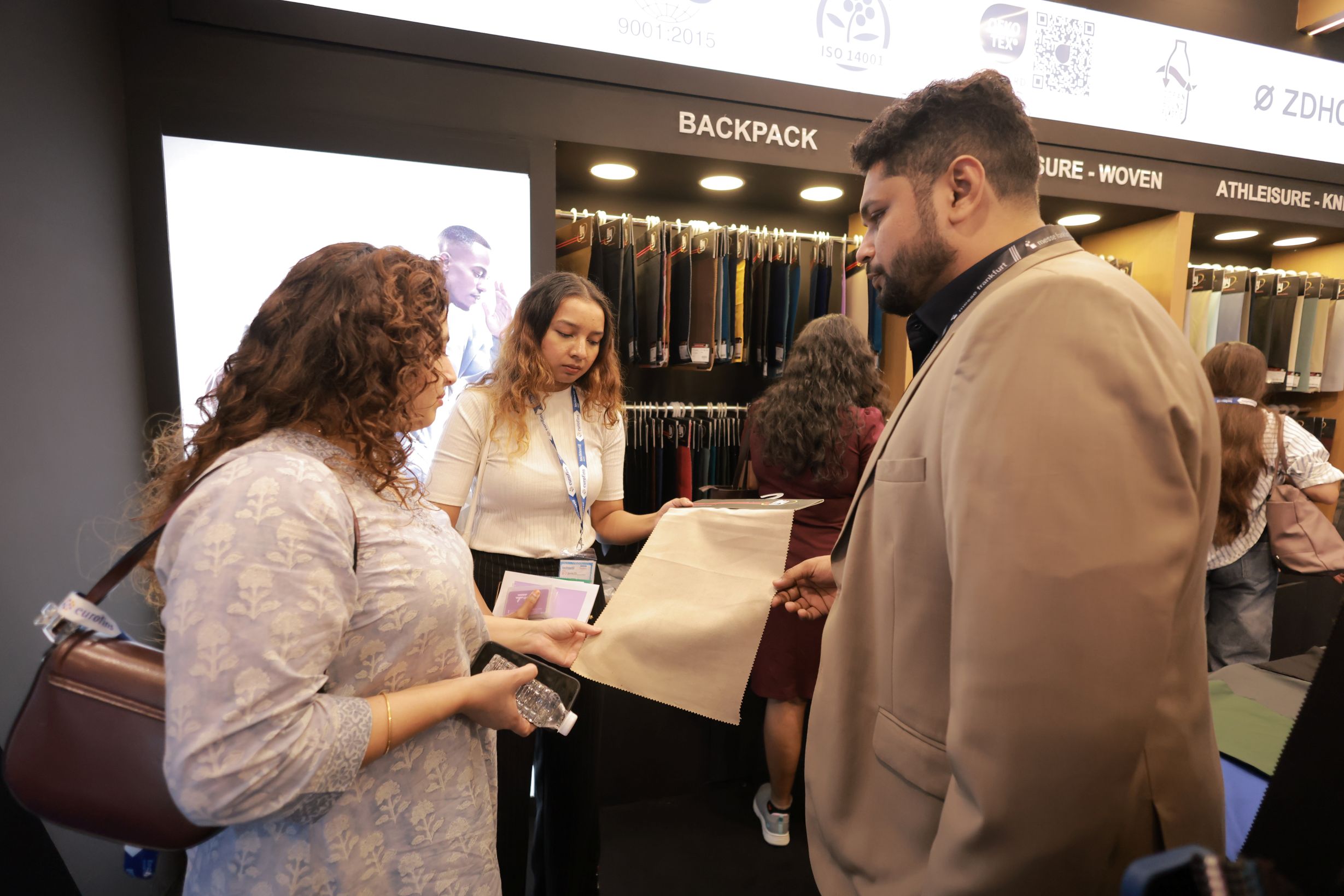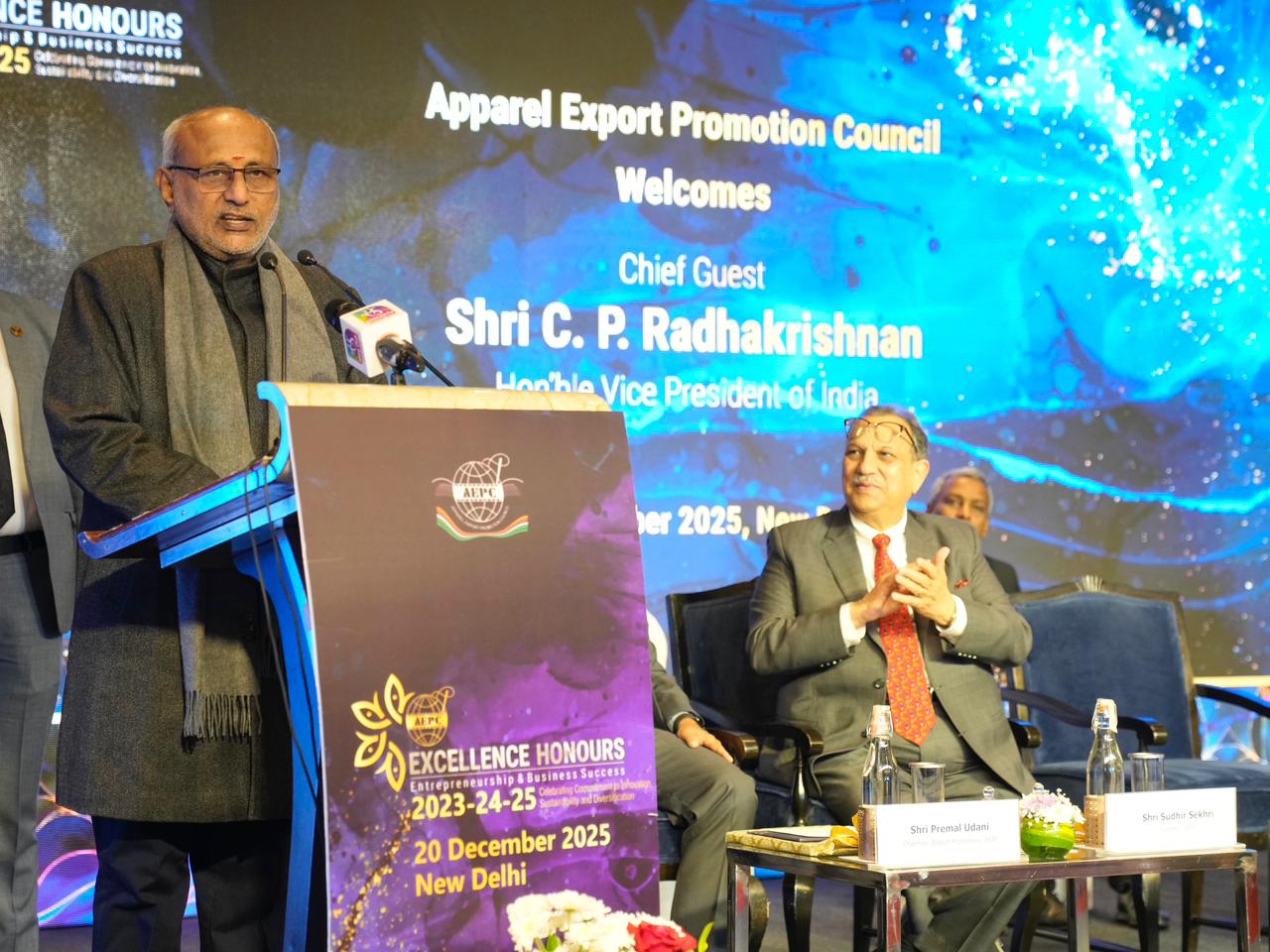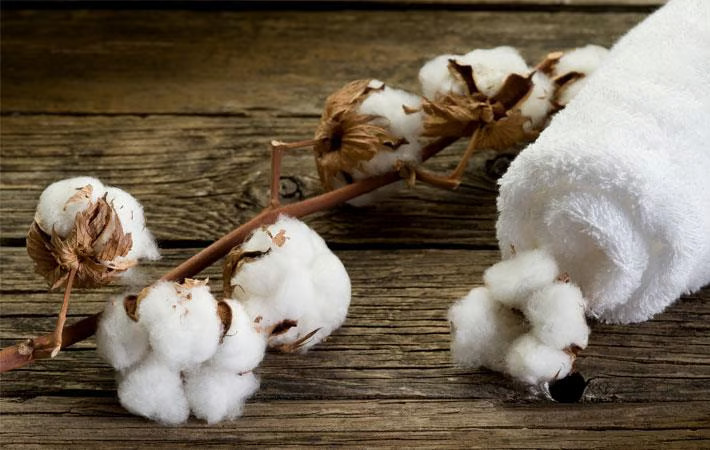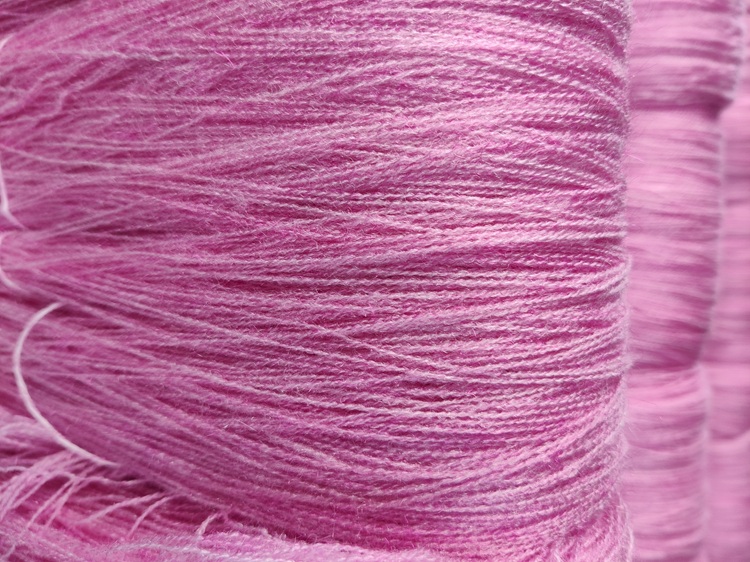FW
Mexico is set to fundamentally disrupt global apparel supply chains starting January 1, 2026, with a sweeping new tariff regime. The Mexican Senate recently approved amendments to the Law on General Import and Export Duties, raising tariffs to between 35 per cent and 50 per cent on goods from non-FTA countries, specifically targeting Asian giants like China and India. This move is not just about revenue - estimated at $3.76 billion annually - but is a strategic pivot to shield domestic manufacturers and align with US trade priorities ahead of the 2026 USMCA review.
Erosion of the Asian-Mexican near-shoring model
The new policy strikes at the heart of the ‘trans-Pacific bridge,’ where manufacturers source Indian yarn or Chinese fabric to assemble garments in Mexico for duty-free entry into the US
Under the upcoming rates, yarn duties will climb toward 25 per cent, while finished garments could hit the 50 per cent ceiling. This marks a structural shift that will force a radical localization of the supply chain, notes one regional trade analyst. For Indian exporters, who currently ship roughly $410 million in textiles and clothing to Mexico annually, the increased landed costs may render mass-market categories uncompetitive, leaving only high-end niche products viable.
While the Mexican government frames this as a defense of local jobs, the broader impact serves as a catalyst for regionalized production. Brands are now pressured to source fibers and fabrics from within the North American bloc to maintain USMCA compliance. This ‘protectionist wall’ presents a dual challenge: while it offers Mexican mills a competitive edge against low-cost imports, it simultaneously raises production costs for Mexican garment exporters. As supply chains tighten, the industry must decide between absorbing these costs or embarking on a high-stakes migration toward 100 per cent regional sourcing to preserve their near-shoring advantage.
Mexico serves as a critical manufacturing hub for the North American fashion market, specializing in denim, knitwear, and technical industrial textiles. The sector is a cornerstone of the national economy, primarily serving the United States and Canada through the USMCA framework.
Nike Inc is maneuvering through what Elliott Hill, CEO describes as the ‘middle innings’of a complex corporate comeback. Under the aggressive Win Now strategy, the Beaverton giant has dismantled the centralized, data-heavy structure of the previous era in favor of a decentralized ‘Sport Offense.’
Finalized in early December 2025, this shift eliminated high-level roles like Chief Technology Officer and Chief Commercial Officer to flatten the organization. By elevating geographic GMs to the Senior Leadership Team and appointing Venkatesh Alagirisamy as the new COO, Nike is betting that localized, faster decision-making will reignite the brand's cooling innovation engine.
Wholesale revival amidst digital declines
The most stark data point from Nike’s fiscal Q2 2026 results (ended November 30, 2025) is the dramatic reversal in channel performance. While Nike Direct revenues declined by 8 per cent, dragged down by a 14 per cent crash in digital sales, the company’s pivot back to wholesale partners like Foot Locker and JD Sports delivered a robust 8 per cent growth, reaching $7.5 billion. This rebalancing of the portfolio marks a formal end to the Direct-to-Consumer at all costs’ era. Hill notes, strengthening partner relationships is critical to ensuring product availability where consumers shop, especially as high-street competition from On Running and Hoka intensifies.
Despite achieving a modest 1 per cent revenue growth to $12.4 billion, Nike’s bottom line remains under significant duress. Net income for the quarter fell 32 per cent to $792 million, largely due to a 300-basis-point margin compression triggered by higher North American tariffs and an aggressive $1.3 billion spend on ‘Demand Creation.; To counter these pressures, Nike is rebalancing its product portfolio away from aging ‘lifestyle’ retros like the Air Force 1 and toward performance breakthroughs. The January 2026 launch of the Nike Mind footwear platform and the Structure Plus running shoe are expected to be the first major tests of this renewed athlete-centered focus.
The world's leading designer and distributor of authentic athletic footwear, apparel, and equipment, Nike’s portfolio boasts of brands like Nike, Jordan and Converse.
Golden Goose has successfully transitioned from a specialized footwear label into a diversified ‘lifestyle ecosystem.’ This evolution reached a fever pitch this month following the launch of the Golden Goose Arena in Milan’s CityLife district, a first-of-its-kind hub featuring nine padel courts and immersive community wellness facilities. This move reflects a broader strategic pivot by Silvio Campara, CEO to embed the brand into the ‘daily rituals’ of its consumers. By moving into the fitness and social spheres, Golden Goose is insulating itself against the volatility of the global sneaker market, which analysts suggest is reaching a point of ‘distressed saturation.’
DTC supremacy and the surge of ready-to-wear
The financial data for the nine months ending September 30, 2025, underscores the success of this holistic shift. The brand’s revenues rose by 13 per cent to €517.1 million, with the Direct-to-Consumer (DTC) segment now commanding 79 per cent of total net revenues - up from 74 per cent in 2024 - driven by a sophisticated ‘phygital’ retail strategy. While footwear remains the anchor, the brand’s expanded ready-to-wear (RTW) and ‘activewear’ collections are seeing triple-digit growth in key urban markets like Tokyo and Dubai. This product rebalancing allowed the company to maintain a best-in-class 33.6 per cent Adjusted EBITDA margin, even as competitors struggled with rising logistical costs.
Central to the brand’s 2026 outlook is the Haus initiative - a series of global creative incubators. Following the successful Marghera launch, the brand inaugurated Haus Ginza in Tokyo this quarter, serving as a residency for local artists and a hub for the ‘Co-Creation’ model. This experiential retail approach, where artisans customize apparel and accessories in real-time, has resulted in a 45 per cent repeat customer rate. By transforming stores into ‘dream factories’ rather than mere points of sale, Golden Goose is effectively decoupling its valuation from traditional retail metrics and positioning itself as a cultural curator for the ‘Next Gen’ luxury consumer.
Founded in 2000 in Venice by Alessandro Gallo and Francesca Rinaldo, Golden Goose disrupted the luxury market with its ‘perfectly imperfect’ aesthetic. The brand is globally recognized for the Super-Star sneaker, which pioneered the high-end distressed look.
As per official data recently tabled in Parliament, India’s cotton imports skyrocketed from 15.20 lakh bales in the 2023–24 season to a staggering 41.40 lakh bales in 2024–25. This nearly three-fold increase serves as a critical ‘safety valve’ for the industry, following a season where domestic production dipped to its lowest levels in nearly two decades due to erratic rainfall across the primary ‘cotton belt’ of Gujarat and Maharashtra. By allowing imports to bridge the demand-supply gap, the government has ensured that the nation’s spinning mills - the backbone of the rural industrial economy - avoid the idle capacity that threatened the sector earlier this year.
Tariff relief and global price convergence
The pivot toward international markets was accelerated by a strategic intervention from the Ministry of Textiles, which extended the 11 per cent import duty exemption on raw cotton until December 31, 2025. This policy shift has successfully narrowed the gap between high domestic rates and softening global benchmarks. International prices for the equivalent S-6 cotton varieties have declined from approximately 79.15 US cents per pound in August to around 73.95 cents this December. Domestically, this has forced a correction, with prices cooling from Rs 57,000 to approximately Rs 52,500 per candy. This price convergence is vital for Indian exporters who are currently battling a punishing 50 per cent tariff wall in the United States; lower raw material costs are now the only viable lever to maintain price competitiveness against rivals like Vietnam and Bangladesh.
Beyond mere volume, the rise in imports - particularly from the United States, Brazil, and Australia- is driven by a demand for ‘contaminant-free’ and Extra Long Staple (ELS) cotton. Indian textile giants are increasingly blending these specialized foreign fibers with domestic crops to meet the stringent strength and uniformity standards required by high-street European retailers. To balance this influx, the Cotton Corporation of India (CCI) has aggressively scaled up its MSP operations, procuring over 31.19 lakh bales worth Rs 13,492 crore as of mid-December to ensure that the surge in foreign fiber does not result in distress sales for Indian farmers.

The global textile and apparel industry is standing at a technological precipice, with the market for Artificial Intelligence (AI) in the sector projected to riseto $21 billion by 2033. This ten-fold increase from 2023 figures marks a decisive pivot from experimental technology to a core operational necessity. In response, the world’s leading organizer of textile trade fairs, Messe Frankfurt has launched a new strategic initiative titled ‘Texpertise Focus AI.’
The initiative to be launched at the Heimtextil fair in Frankfurt in January 2026. It aims to institutionalize AI across the entire textile value chain, signaling a formal industry-wide transition toward data-driven manufacturing and design.
The intelligence core of the global value chain
The initiative reflects a maturing market where AI is no longer a niche digital tool but a fundamental driver of efficiency. Current data indicates, approximately 13.5 per cent of European industrial firms have already integrated AI into their workflows as of 2024.
The transformation is particularly acute in production, where researchers at the German Institute of Textile Technology (ITA) estimate, upto 70 per cent of standardized production tasks could eventually be automated. By placing AI at the center of its international fair calendar, Messe Frankfurt is positioning itself as the primary orientation point for a sector grappling with a deepening skills shortage and the need for higher production resilience.
Designing the future through’Woven Intelligence’
The ‘Texpertise Focus AI’ program aims to spotlight the intersection of high-end design and computational technology. A cornerstone of the January 2026 launch will be the Architonic Live Talk featuring a London-based architectural futurist, Tim Fu.
Under the theme ‘Woven Intelligence: Designing Spaces in the Era of AI,’ the program will explore how generative AI enables meaningful collaboration between physical craft and digital architecture.
This synergy is further explored in Patricia Urquiola’s immersive installation, ‘Among All,’ which uses AI to simulate material properties and accelerate creative workflows, demonstrating that digital tools can enhance rather than replace human intuition.
Driving the ‘twin transformation’ of sustainability
The strategic shift is inextricably linked to the industry’s environmental imperatives- a concept known as the ‘twin transformation’ (the convergence of digitalization and sustainability).
Currently, the global industry produces 116 million tons of fibers annually, yet only 1 per cent of post-consumer waste is recycled. AI is emerging as the key to closing this circularity gap. By leveraging image-recognition systems for waste sorting and AI-based forecasting to prevent overproduction, manufacturers can significantly reduce the resource intensity of their supply chains. These advancements will be a focal point at Texprocess in April 2026, where the emphasis will move to hardware-software integration and life-cycle analytics.
Reshaping the workforce and production ;andscapes
As AI automates routine tasks, the textile workforce is undergoing a structural realignment. The industry is seeing the emergence of new job profiles centered on data analytics and digital process control. This evolution is vital for addressing labor shortages while simultaneously increasing output quality. Messe Frankfurt’s global rollout of this initiative will tailor its content to local market characteristics, ensuring that from fiber production to the point of sale, the ‘responsible use’ of AI becomes the standard.
By 2026, the ‘Texpertise Focus AI’ umbrella will serve as a permanent searchable directory and live demonstration platform, effectively acting as a bridge between current textile traditions and a highly automated, sustainable future.
Welspun Living has shattered industry benchmarks by securing a world-leading score of 90 in the 2025 S&P Global Corporate Sustainability Assessment (CSA). This achievement marks a staggering 24-point ascent from its 2023 performance, catapulting the Indian home-textile giant to the number one global position in the ‘Textile, Apparel & Luxury Goods’ category. While many global peers have struggled to maintain momentum amidst tightening reporting standards, WLL’s environmental score of 94 out of 100 underscores a profound shift. Indian manufacturing is no longer just a high-volume hub; it is increasingly becoming the global gold standard for ESG-led production.
The competitive edge of circularity in retail
This milestone arrives as the $130 billion global home textile market pivots toward ‘sustainable luxury.’ With global retail giants like Walmart and Costco increasingly linking vendor contracts to ESG transparency, WLL’s top-tier ranking serves as a powerful market-access tool. ‘Growth must be responsible and transparent,’ states Dipali Goenka, Managing Director & CEO, highlighting that WLL’s focus on circular material flows and clean energy is now a core business driver. By outperforming its global competitors in social and governance metrics, WLL is effectively de-risking its supply chain against upcoming international regulations. This leadership is critical as India aims to scale its textile exports to $100 billion by 2030, proving that environmental stewardship and aggressive commercial growth are no longer mutually exclusive.
A key entity of the $3.6 billion Welspun World, Welspun Living Limited (WLL) is a global leader in home textiles, specializing in towels, bed linens, and flooring solutions. Operating across more than 60 countries, the company maintains world-class integrated manufacturing facilities in India, serving as a primary supplier to top-tier global retailers. WLL’s strategic growth plan is built on three pillars: Branding, Innovation, and Sustainability, with a specific focus on expanding its domestic retail presence and increasing its share of value-added products.
Tommy Hilfiger joined the Spinnova consortium in late 2025, marking a strategic shift from experimental capsule collections to industrial-scale circularity. By joining this collaborative model, the PVH-owned brand gains priority access to a fiber that is arguably the ‘holy grail’ of sustainable textiles: a wood-and-waste-based material produced without harmful chemicals, dissolving pulps, or side streams. As the European Union’s Strategy for Sustainable and Circular Textiles begins to enforce stricter ecodesign requirements, Tommy Hilfiger is positioning itself ahead of the curve. The Spinnova fiber boasts a staggering environmental profile, utilizing 99 per cent less water and emitting 65 per cent less CO2 than traditional cotton production. This partnership is not merely about aesthetics; it is a defensive move to secure a supply of compliant, high-performance materials in a resource-constrained market.
Decarbonizing the premium apparel value chain
The integration of Spinnova across Tommy Hilfiger’s diverse product categories represents a major test for ‘Next-Gen’ materials in the premium retail sector. While many sustainable fibers struggle with durability, Spinnova’s mechanical process maintains the natural strength of the cellulose. We are pleased to welcome Tommy Hilfiger to the consortium, says Pedro Brito, Senior Commercial Manager, Spinnova. Their commitment aligns with our mission to scale textile materials that don't compromise the planet. This move follows a successful case study with Adidas, which proved the fiber could withstand the rigors of performance wear. For Tommy Hilfiger, the challenge lies in scaling this to meet the demands of a global supply chain while navigating the higher price premiums associated with early-stage fiber tech. However, with the sustainable apparel market projected to reach $20 billion by 2030, the investment serves as a crucial pillar for long-term brand relevance.
Tommy Hilfiger is one of the world’s most recognized premium designer lifestyle brands, offering high-quality apparel, footwear, and accessories. Owned by PVH Corp, the brand is a cornerstone of a portfolio that generated over $9 billion in annual revenue in recent fiscal years.
Knitwear Capital of India,’ Tiruppur, is witnessing a historic reversal of fortunes this December. Once the primary engine of India's apparel exports, the cluster has seen Rs 15,000 crore ($1.8 billion) in confirmed orders vanish since the US imposed a punitive 50 per cent tariff on Indian textiles in August 2025. MK Stalin, Chief Minister, Tamil Nadu has termed the situation a ‘looming humanitarian challenge,’ as daily revenue losses across the state's textile belt hit Rs 600 million. With US buyers demanding 25 per cent price haircuts to offset the levies, domestic manufacturers are facing a ‘margin collapse’ that has already forced production cuts of up to 30 per cent.
Shift to alternative hubs
The crisis is rapidly reshaping global sourcing maps. While India remains locked in a trade stalemate with Washington, competitors like Vietnam, Bangladesh, and Cambodia - facing significantly lower tariffs of 19 per cent to 20 per cent - are aggressively capturing Tiruppur's lost market share. ‘Once supply chains move, they rarely revert,’ Stalin warned in a high-stakes letter to Prime Minister Modi, emphasizing that the state’s 7.5 million textile workers are now at risk of mass layoffs. To counter this, New Delhi has accelerated its ‘FTA blitz,’ signing a landmark deal with Oman this week and finalizing the India-UK CETA to offer duty-free access for Indian garments elsewhere.
Tiruppur Exporters Association is the premier trade body representing the Rs 45,000 crore cotton knitwear cluster in Tiruppur, which accounts for 90 per cent of India’s cotton hosiery exports. Its single largest buyers includes the US which accounts for 35 per cent of its total exports, followed by the EU and the UK.
India’s textile and apparel sector has voiced a strong opposition against a recommendation by the Directorate General of Trade Remedies (DGTR) to impose steep Anti-Dumping Duties (ADD) on Mono Ethylene Glycol (MEG). Ranging from $103 to $137 per metric tons, these proposed duties have sparked a Pan-India protest involving over 15 major trade associations. Industry leaders warn that this move could dismantle the fragile progress made by recent GST reforms, which reduced taxes on Man-made Fiber (MMF) to 5 per cent. By effectively raising MEG costs by an estimated 20 per cent, the levy threatens to create a ‘chokehold’ on the downstream value chain, erasing the affordability gains intended to make Indian textiles globally competitive.
Domino effect on employment and MSME Viability
The collective of trade bodies, including the Northern India Textile Mills' Association (NITMA) and the Confederation of Indian Textile Industry (CITI), warned of severe socio-economic fallout if the Finance Ministry approves the DGTR’s findings. An estimated 40,000 MSMEs are at immediate risk of closure, potentially stalling Rs 20,000–Rs 30,000 crore in planned expansions. Furthermore, the duty jeopardizes approximately 3 lakh potential jobs linked to the Production Linked Incentive (PLI) scheme. By worsening the ‘Inverted Duty Structure,’ the proposed levy makes Indian exports significantly more expensive, handing a competitive advantage to global rivals in the $350 billion international textile market.












